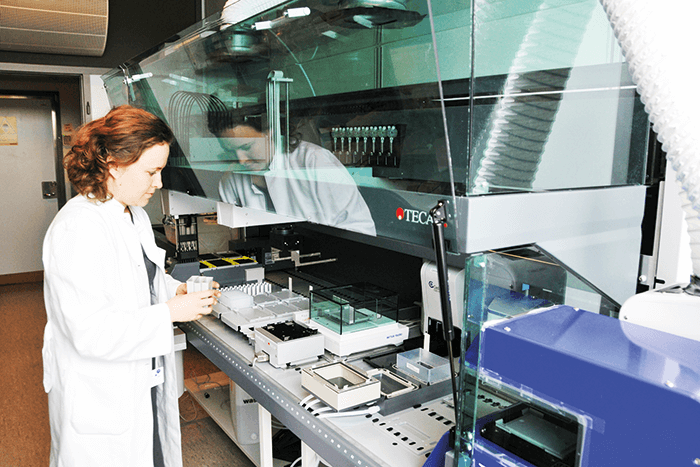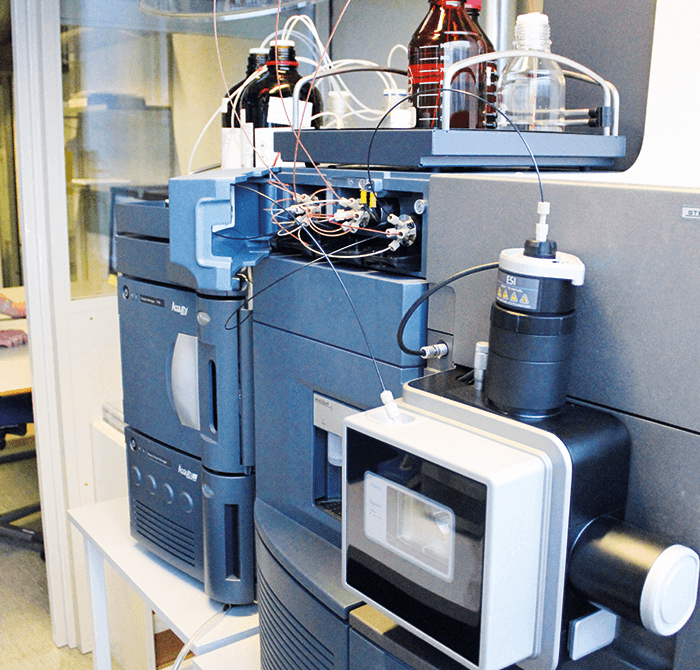Tell us about your project…
Eric Fotheringham: For some years, we have had a collaboration with the University of Copenhagen (Petur’s lab) focused on mass spectrometry (MS) applications in forensic toxicology. More recently, this has culminated in us asking him to participate in our Centers of Innovation (COI) Program, working on the monitoring of novel psychoactive substances (NPS).Petur Dalsgaard: The field of NPS is very fast-paced; there are one or two new compounds hitting the streets every week – so getting the information into your target library is one of the biggest challenges. There is a risk that by the time you finally have the reference standard in your system, the compound has fallen out of favor. So we’re trying to build new databases to get ahead of the game. We now have a cloud database called HighResNPS (www.HighResNPS.com); every time a compound is detected somewhere, we can get the reference values to use in our QTOF-MS system. If members find a new tablet or designer drug in Finland, for example, then they post it in the library, and I can use their values in my system, regardless of vendor – without any reference standard. Each member has different instrumentation, but they can still use the information in the database. At the moment, it’s mainly the European countries who are involved, but we’re trying to get as many labs as possible to join in. It’s free, but everybody has to contribute findings. You could describe it as crowd-building – if everybody contributes, then each party gets back what they need many times over.

We are hoping that building a library this way will be faster than the European Monitoring Centre for Drugs and Drug Addiction (EMCDDA). Databases such as mzCloud (www.mzcloud.org) are really big now – there are 500 NPS compounds (out of a total of 6,500 compounds). The challenge, of course, is how to use these cloud databases...
How did you build the partnership?
PD: I guess it really started ten years ago on our side, when the University of Copenhagen purchased a Waters UPLC TOF-MS system; I was hired to get it up and running – and to conduct forensic toxicology screening. One of the key people I worked with at Waters was Michelle Wood – she did the instrument training and I continued to correspond with her afterwards. Later, I got to know some of the programmers, and it evolved from there. We now have a very close relationship with the company. EF: The fundamental premise of the COI Program is to carefully select and partner with thought-leading scientists around the world who are already using our technology, whether that’s a simple sample prep product, a piece of software or a full-blown LC-MS system. We reached out to Petur for a collaboration because he has access to an incredible range of samples – from police departments and so forth around Europe; there are few people who could claim the same! Petur has now run many of those samples on our MS-based systems, which has given us some very interesting insights. Not only has it enabled us to further develop the instrumentation but also – even more interesting to us – the software that collects, processes and archives the datasets. It’s also enabled us to expand our UNIFI Scientific Information System to include libraries of related drug compounds and their metabolites.





